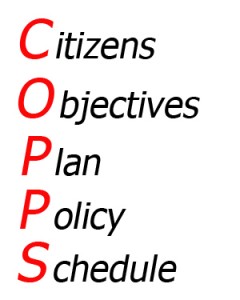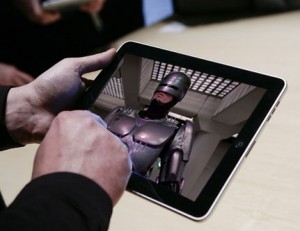 BREAKING NEWS…Any City, USA – Law Enforcement now has the ability to immediately communicate and engage with the community via social media! Stay with us for the story, coming up at the top of the hour…
BREAKING NEWS…Any City, USA – Law Enforcement now has the ability to immediately communicate and engage with the community via social media! Stay with us for the story, coming up at the top of the hour…
David Krajicek, veteran police reporter and true crime author, wrote an informative article recently, appearing on Poynter.com: With social media, police and reporters grapple over control of the ‘message.’ In the article, Krajicek quotes a number of excellent social media sources intimately familiar with the use of social media by law enforcement. Krajicek fairly states that social media is now a “primary mode of communication” for many policing agencies and notes that this platform is fundamentally changing the way law enforcement communicates and interacts with both their citizens and the media. However, the chosen article title leads one to possibly believe there is a behind the scenes battle between these two professions.
Some may say that law enforcement traditionally was known as being tight-lipped when it came to information sharing: be it with the media, other agencies, and even internally. Right to know and need to know was a phrase taken quite literally in law enforcement circles. In the days before governments were forced into opening some doors via public records statutes, many in law enforcement saw fit to not share a word. Technology, legal mandates, budgetary concerns, and society have changed the manner in which we share information, and law enforcement is now adapting to these changes.
There is now the potential for there to be a citizen journalist, photographer, or videographer on each and every street corner, and the speed of information flow or “news” is virtually immediate. This flow of information is where the true grapple is for media, not with law enforcement. No longer does media have the sole control of the message: the message may be told by a teen who immediately uploads a clip of crime scene footage to YouTube, or a ferry boat operator who sends a Twitpic of a downed plane on the Hudson River, or yes, even the local law enforcement agency who posts a press release to their website, followed by a link sent out via Twitter or Facebook regarding a newsworthy event. Truly, everyone now has the ability to disseminate news.
When it comes to use of social media for law enforcement, is news dissemination the main emphasis? It is fair to say that news is certainly one component to the social media presence by law enforcement, but even Krajicek in his article notes some of the most meaningful reasons for law enforcement participation, well beyond simple news. The potential for positive branding and reputation management are key strategies for any law enforcement organization entering social media. Law enforcement should take advantage of new technology and bring their agency story to the community. So many times, contact with law enforcement is in a negative context: a crime victim filing a report, a driver receiving a citation, a subject being arrested for a crime, and the list goes on. Social media gives law enforcement an opportunity to reach out to numbers of persons who may otherwise never interact with a police officer, sheriff’s deputy, or federal agent. Social media gives law enforcement a chance to engage and communicate like I have never known in my career.
During a recent training session offered by panelists at an International Association of Chiefs of Police conference, the topics of strategy and policy guidelines were front and center in the curriculum. Lynn Hightower, Communication Director for the Boise Police Department (ID) spoke on creating a social media outreach strategy for a police agency that is “useful, relational, and reliable.” There is a need to humanize our departments and the use of various social media platforms helps give law enforcement that ability. Mark Economou, the Boca Raton Police Department (FL) Public Information Manager, addressed community partnerships through use of social media and emphasized, “The community is your customer…” Economou said that law enforcement should “go where the people are” equating the use of social media by law enforcement to an agency assigning an officer to attend a neighborhood watch meeting. Sergeant Tim Burrows, Toronto Police Service (Canada), equated law enforcement’s use of social media to empowering the public. By telling them what is going on, we can leverage our efforts and the use of social media becomes a force multiplier for law enforcement.
The next hurdle for law enforcement use of social media, and all public safety for that manner, is the integration of social media into emergency management. As previously noted, the community is present on a myriad of social platforms. The challenge to public safety: are we listening adequately on those social media platforms enough to engage with our community during a disaster or emergency? I think not. This topic is an important issue and is slowly being introduced into discussions. On the other hand, use of social media and instant communication platforms are growing rapidly in law enforcement and public safety.
The use of companies like Nixle and Code RED are widely used to disseminate immediate information relevant to emergencies or “alert” incidents to local communities. Twitter is also being used in a similar fashion by those agencies looking for a no-cost communication platform. Some jurisdictions are even developing their own alert platforms, like that of the City of Anaheim (CA), in order to disseminate information to their communities in a timely manner.
Days of the local beat reporter stopping by the station to read the “call log” or “reading board” for crime activity are long gone. The personal relationship and trust that was built through daily contact between law enforcement and the local press was replaced with email and perhaps a phone call between persons who knew nothing of one another. I will offer to the reader that law enforcement use of social media has had the opposite impact on media and police relationships. Media at all levels participate in social networking and most are quite amenable to engaging. Locally, I have had the opportunity to meet and speak with local reporters, writers, and news editors, all via contacts initiated on social media. Many of these contacts have resulted in repeat and beneficial exchange of information that extends beyond just the job. Without social media, the contact may very well have remained the impersonal email or phone call.
Participation in social media by law enforcement is no longer a choice, it is a necessity. If you choose not to engage and share your agency’s story and information, then who will? This grapple is certainly not unique, nor simply between law enforcement and the media: this grapple involves and impacts everyone. The true battle is how to best use these new platforms to deliver the information the public wants in an efficient, professional, and meaningful manner, while at the same time, effectively dealing with the immediacy of information flow via the Internet. The community resides in social media and so should law enforcement in order to engage and reach that community.











